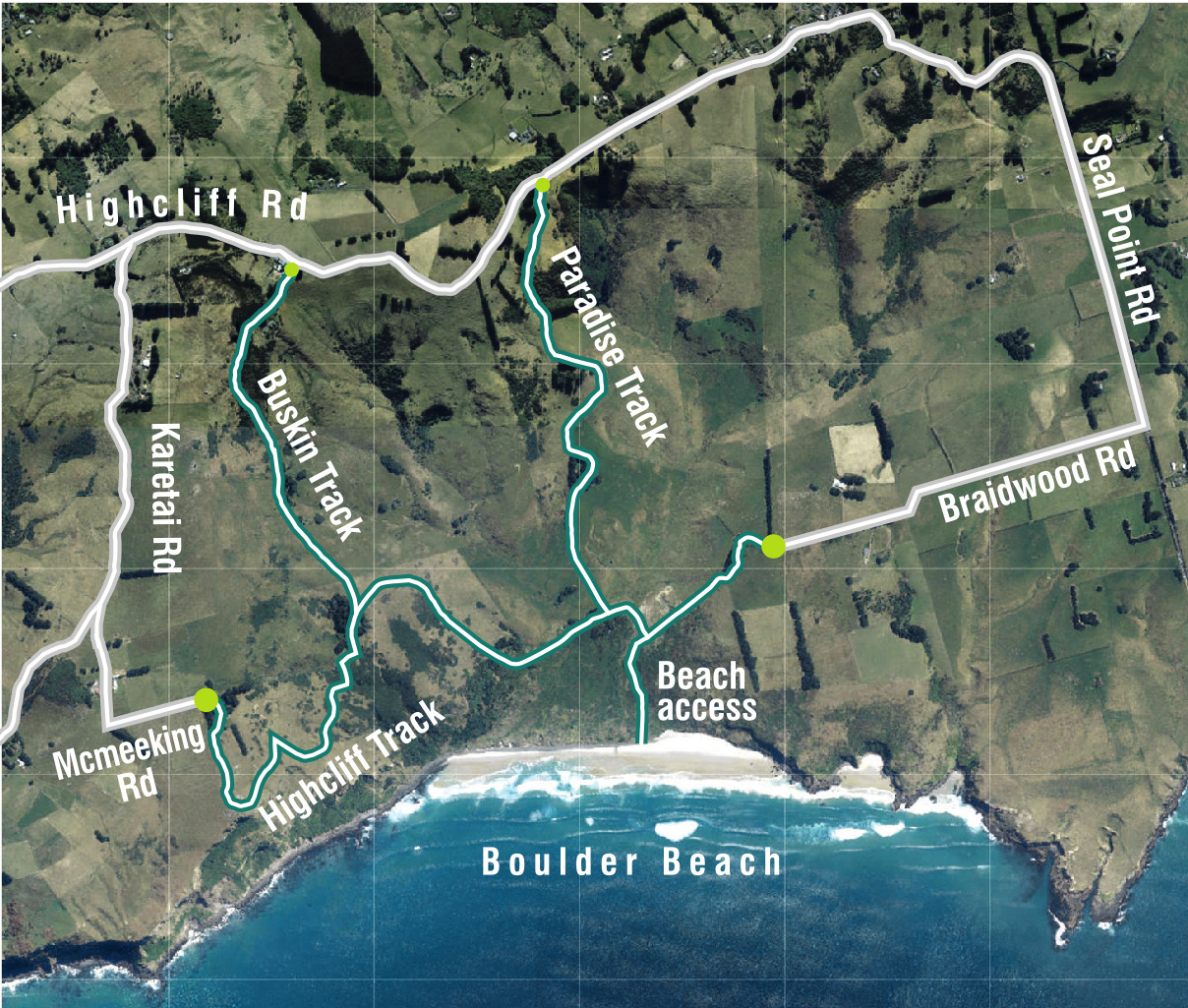

Various routes cross up and down over hills, past high cliffs and dramatic views, revealing a whole new aspect not visible from the car.
Here are a couple of ways to explore, about half a day each:

Bizarrely in such a wild spot, this bit of track is a beautifully maintained, grassy, footpath bordered by a tidy rock wall. At the tip of a mini peninsula you suddenly round a corner, past a field full of lichen-covered rocks, to a wow of a view over Boulder Beach.
Things get adventurous as the track becomes a route down a steep grassy hill. Channel your favourite four-legged animal.

But first pop down to Boulder Beach. It’s a prime yellow-eyed penguin breeding site, so is closed from November 1 to the end of February.
Access requires a bit of detective work. At the point shown on the map, climb the short fence that has two wooden stakes looking as if they used to support a sign. This sounds dodgy but the Department of Conservation has confirmed access is OK. That said, keep strictly to the track to give space to any of our feathered friends visiting their nests, let alone any startled sea lions reacting scarily. The track’s not maintained, so is indistinct in parts.

First park on Seal Point Rd and walk down Braidwood Rd. Paradise Track’s uphill looks down over evocative remnants of former farm buildings. Whole invisible lifetimes have been lived there, just a few bricks now. That’ll be us one day. None of it really matters.
Highcliff Rd has history too. The site of Otago’s first co-operative cheese factory is usually just a blue road-sign glimpsed at speed from the car. The fossil-fuelled chair also camouflages a rest area straight across the road, with seat, view, map and commemorative plaque.

The spot’s a good one for contemplation of some of the earlier human goings-on in the area. Despite the dominant narrative of north to south Maori migration, early southern settlers came and went over the years.
During the little ice age, around the 16th to 19th century, people returned from Te Waipounamu/the South Island back up to the North Island, then under population pressure, back south again. Today’s comparative toddle is given perspective.
Terrain on this walk ranges from grassy road edge to uneven, pugged soil. Footwear with knobbly soles is a definite bonus, if not a Godsend when there’s been rain.










